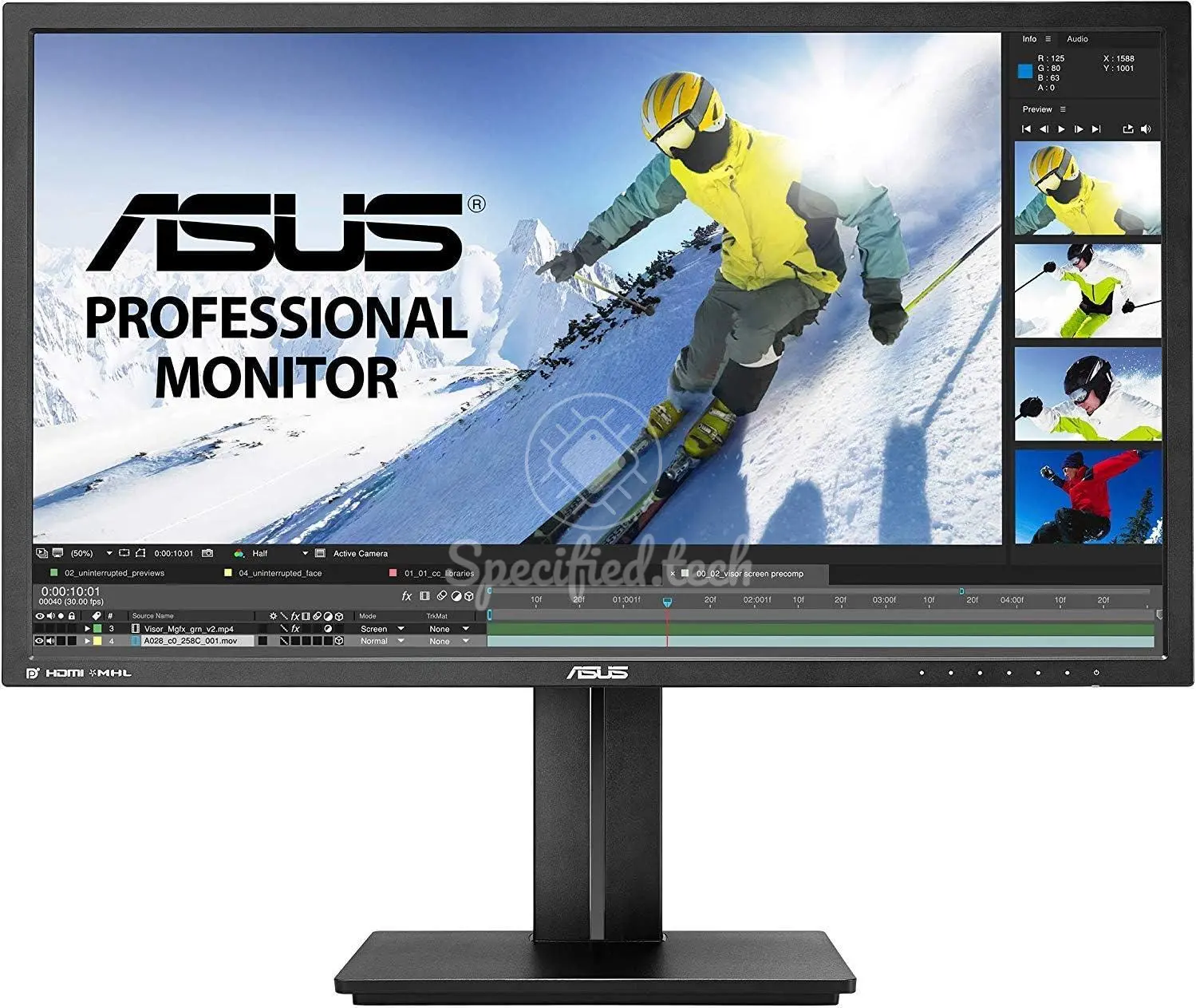
Display, power consumption, dimensions, technologies used, connections, certifications, comfort features. All these keywords can be relevant for a purchase decision, but an exact comparison is often difficult. For this reason, we will summarize as many of the mentioned specifications as possible in an understandable form in the course of this article. Let's start with the most important component of the PB287Q from Asus.
Display
Any multimedia content can be displayed on 28 inches ( 71.1 cm on the diagonal). As already known, two monitors with different outer dimensions can have the same screen diagonal. In the case of the monitor PB287Q , we find an aspect ratio of 1.778 to 1. This means that for every 1 pixels in height, 1.778 pixels in width are added. For comparison: A classic CRT monitor had an aspect ratio of 4:3. In addition to the aspect ratios and the specified screen diagonal, the ratio between the monitor surface and the actual display could also be important for some enthusiasts. This ratio describes the general relationship between the non-display area and the display. In other words, approximately 84.3 % of the front surface of the monitor consists of the display, while the remaining percent consists of screen edges and does not enable image reproduction. When setting up several monitors next to each other, it is advisable to prefer models with the narrowest possible edges. The display is a TN panel. The panel has a resolution of 3840 x 2160 px. The pixel density is 157 ppi. The pixel pitch is 0.162 mm. The continuous possible brightness specified by the manufacturer Asus is 330 nt. The panel is illuminated by W-LED. The built-in panel ensures stable color reproduction of the image, even at deviating viewing angles, by means of its 170 ° (horizontal) viewing angle. Asus promises stable color reproduction moreover within a 160 ° vertical angle. The refresh rate is horizontally seen at the PB287Q 24 khz to 99 khz. Vertically, however, the image renews at a minimum rate of 30 hz up to 75 hz. The minimum response time of the monitor is ms. The display panel is Anti-glare/Matte (3H).
Color representation
The panel has a bit depth of 10 per color channel, but what does that mean? The number of bits determines how many colors can be encoded for the individual pixels of the display. For an 8-bit panel, for example, this is 256 different colors (2^8 = 256). However, since we usually display three different colors per pixel at the same time, in theory about 16 million (256^3) different colors are possible by mixing the three pixels. A 10-bit panel could even display a billion colors. The coverage of the Adobe RGB 1998 color space is 66 % according to the manufacturer. According to the manufacturer, the coverage of the NTSC 1953 color space is 72 %. According to the manufacturer, the coverage of the SRGB color space is 96 %.
Contrast ratio
Contrast ratio is a common measurement used to represent the maximum relative differences in brightness between black and white. It describes the ability of a screen or projector to produce a high-contrast image and is the quotient of the maximum and minimum displayable luminance. The higher the values are away from each other, the stronger the quantitatively seen difference between black and white is set up, which in turn results in an improved image quality. This monitor from Asus has a static contrast ratio of 1000 : 1 , according to the manufacturer. In contrast to the static contrast ratio, the dynamic contrast ratio changes the brightness of the panel itself in addition to the difference measurement from black to white. In addition to the difference between the brightest and the darkest pixel, the backlight is thus changed. Since the brightness of the panel may not be able to be adjusted exactly to a single pixel, a so-called halo effect is possible. The value of 100000000 : 1 of dynamic contrast ratio for the monitor PB287Q cannot provide any information about the severity of the halo effect here. Therefore, it is more useful to compare the static contrast ratio.
HDR
The monitor supports all HDR modes listed here:
screen design
Features
- The display/monitor supports Frame Rate Compensation.
Panel manufacturer
Many manufacturers of monitors and TVs fall back on third-party manufacturers, such as Samsung or LG, when choosing the actual display (panel). Thus, many of the monitors have the same panel and, conversely, differ only in their design, additional functionalities, the software used and, of course, the price. Two monitors from Asus or another manufacturer with an identical panel do not necessarily have to have the same picture quality, but it is usually a first indicator for a purchase decision. The panel used here is originally from Innolux and has the model number M280DGJ-L30.
Power consumption
The monitor can be operated on a 110v power supply. The monitor can be operated on a 220v power supply. The power grid has to supply a frequency of 50 hz to 60 hz.
Further information
- 1.2
- 1.4
- 1.4mhl

